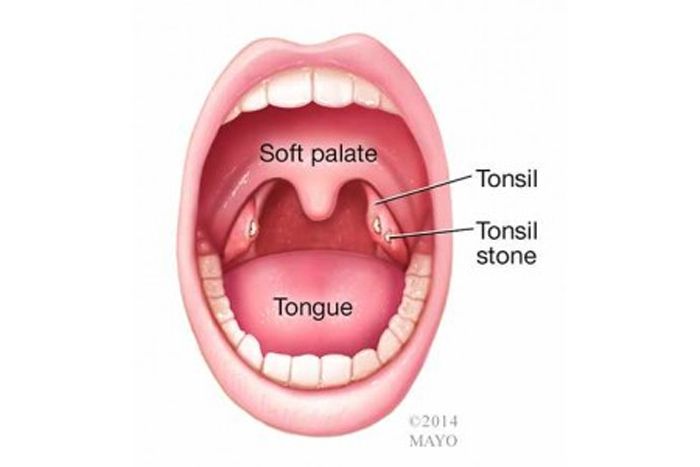What Is Tonsillitis?Tonsillitis is an infection of the tonsils. Tonsils are lumps of tissue on both sides of the back of the throat that help the immune system protect the body from infections. Inflamed tonsils get red and swollen and can cause a sore throat.
What Are the Signs & Symptoms of Tonsillitis?Inflamed tonsils look red and swollen, and may be covered with a yellow or whitish coating or spots. A child with tonsillitis may have:
-a sore throat
-fever
-bad breath
-swollen glands (lymph nodes) in the neck
-trouble swallowing
-stomacha
-headache
 What Causes Tonsillitis?
What Causes Tonsillitis?Tonsillitis is usually caused by a virus such as:
- adenovirus
- the flu
- Epstein-Barr virus (mono)
Bacteria also can cause it, most commonly group A streptococcus (strep throat). Rarely, tonsillitis can be caused by something other than an infection.
who Gets Tonsillitis?Anyone at any age can get tonsillitis. Strep throat is most common in kids and teens ages 5 to 15.
How Is Tonsillitis Diagnosed?Health care providers will ask about symptoms and do an exam. They'll check the inside of the mouth, the back of the throat, and the neck.
A health care provider may use a soft cotton swab to gently collect a sample from the tonsils and back of the throat. This can be:
-tested quickly with a rapid strep test that gives an answer within minutes
-sent to a lab for a throat culture, which takes a few days
If the rapid strep test doesn't show signs of strep, the health care provider will depend on the culture for a final diagnosis.
It's important to call your health care provider if your child has tonsillitis symptoms.
How Is Tonsillitis Treated?Treatment depends on whether the tonsillitis is caused by:a virus, in which case the body will fight the infection on its own
bacteria, in which case the doctor will prescribe an antibiotic. Help your child take the antibiotic exactly as directed. This helps symptoms clear up quickly and prevents spreading the infection to others.
It's important to finish the entire prescription — even if your child feels better in a few days — or the infection could come back. This also helps prevent a more serious health problem that streptococcus can cause, called rheumatic fever, which can damage the heart.
Rarely, a health care provider might recommend a tonsillectomy (surgery to remove the tonsils) if a child's tonsils get infected a lot or are so big they make it hard to breathe at night. Tonsillectomy used to be very commonly done. Now, experts use guidelines to decide if tonsil removal is the best treatment. In general, tonsillectomy may be considered if a child has seven sore throat episodes in 1 year, five episodes 2 years in a row, or three episodes 3 years in a row.
How Can I Help My Child Feel Better?Make sure that your child drinks lots of fluids and gets plenty of rest. If swallowing hurts, serve liquids and soft foods. Some kids prefer warm drinks, like soup or sweetened tea. Other kids like the feel of cold or frozen foods on their throat, such as milkshakes, smoothies, ice pops, or ice cream. Older kids can suck on hard candies or throat lozenges.
You can give a pain reliever, such as acetaminophen or ibuprofen, for throat pain. Don't give aspirin or other products that contain aspirin, though, because these can put kids at risk for Reye syndrome.
Is Tonsillitis Contagious?Tonsillitis is contagious. Sneezing and coughing can pass the germ causing the illness from one person to the next.
Can Tonsillitis Be Prevented?Try to keep kids away from anyone who already has tonsillitis or a sore throat, and make sure everyone in your family washes their hands well and often.
If someone in the family has tonsillitis, keep their drinking glasses and eating utensils separate, and wash them in hot, soapy water. They should not share food, drinks, napkins, or towels with other family members. Give them a new toothbrush after they're treated and no longer contagious.
What Else Should I Know?If the sore throat gets worse, especially on one side, call your doctor. This could be a sign of a peritonsillar abscess. This happens when bacteria spread from the tonsil to the space around it and fill it with pus. Other signss of an abscess include fever, headache, earache, drooling, or a muffled voice. Treating an abscess might be done in a hospital, possibly with surgery to drain the infection. Tonsillectomy may be considered for kids who get multiple peritonsillar abscesses.
Reviewed by:
Steven M. Andreoli, MD


